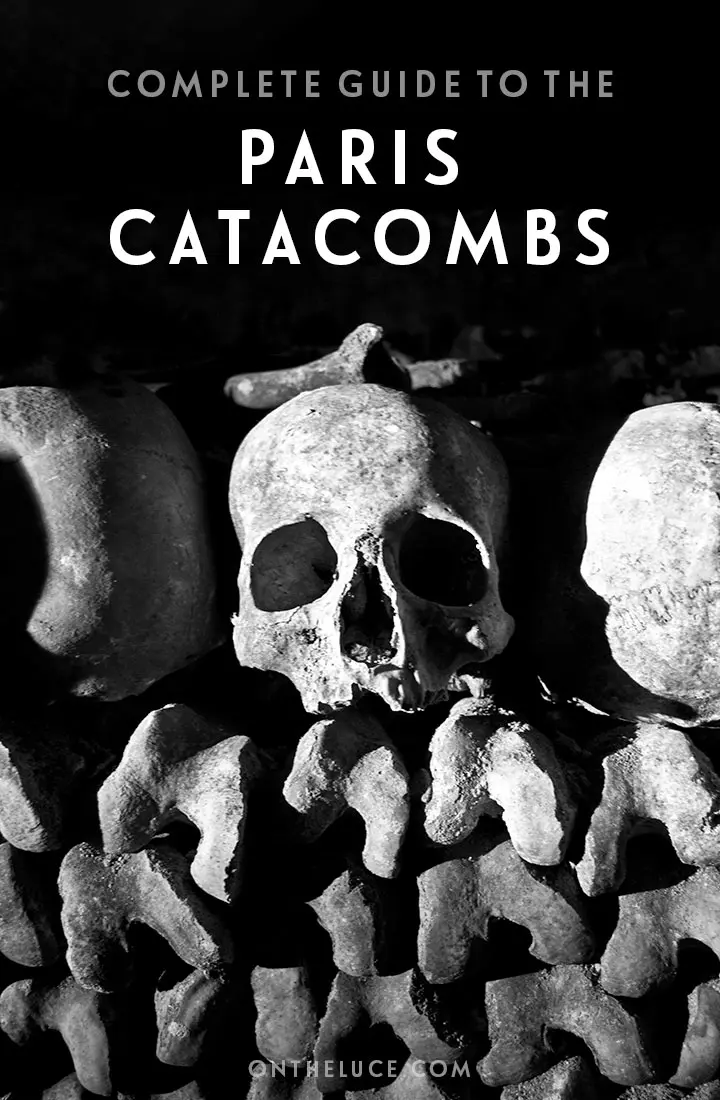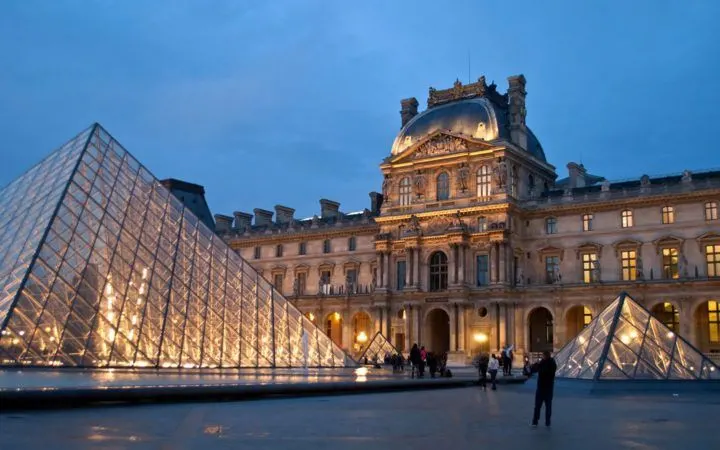Head underground to the Paris catacombs, where former quarry tunnels have been turned into a mass grave piled with bones that’s become one of Paris’ more unusual and eerie tourist attractions.
* This site contains affiliate links, where I get a small commission from purchases at no extra cost to you.

Beneath an unassuming building in Place Denfert Rochereau in southern Paris is the gateway to a subterranean world of tunnels and caverns piled high with human bones – the Paris catacombs. Part of the city’s vast network of abandoned quarry tunnels were turned into a mass grave for millions of Parisians at the end of the 18th century.
But how did this happen – and how has an underground cemetery in Paris become one of its most unusual tourist attractions? This guide to the catacombs of Paris takes you through their history and all you need to know to plan a visit to Paris’ hidden world of the dead.
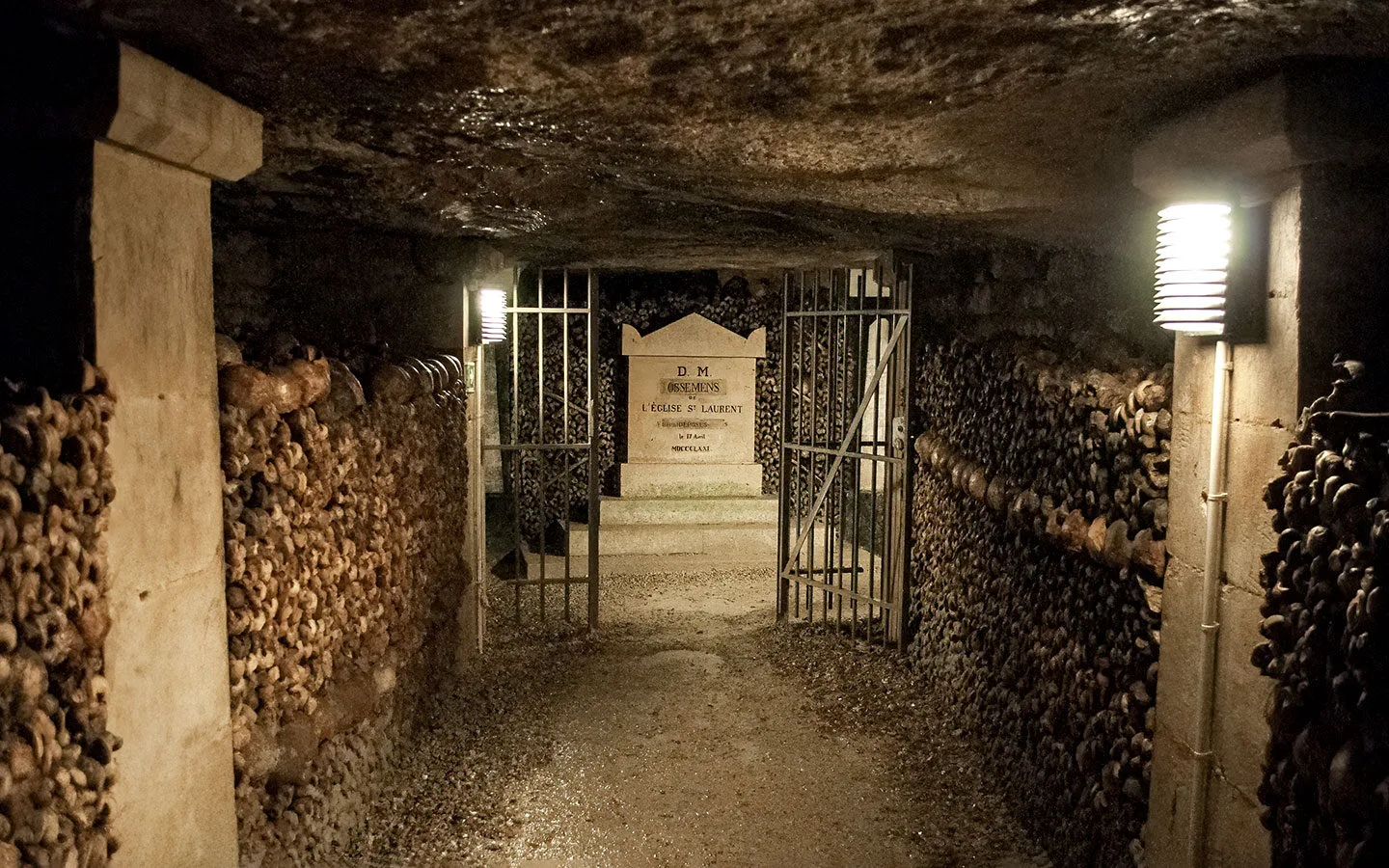
The history of the Paris catacombs
There are over 200 miles of quarry tunnels hidden below the streets of Paris, some dating back to the 13th century. They were used to mine the limestone and gypsum which helped build some of Paris’ most famous buildings, like the Louvre and Notre Dame cathedral. But once the stone had been removed, the tunnels were abandoned and forgotten.
The mines were originally built on land outside the city walls. But as Paris expanded, buildings were constructed on top of the old mine shafts, which made the ground unstable. A major collapse in 1774 led to a whole street tumbling 100 feet into the ground. So a scheme was started up to map and then repair and strengthen the tunnels.

At the same time, Paris’ cemeteries were overflowing. Originally the city’s larger churches had their own cemeteries around the outskirts of Paris. But as the city expanded, many of the cemeteries were absorbed into the city and had no more room to grow.
By the late 17th century, only the rich could afford a church burial and the poor were sent to the ‘Cemetery of the Innocents’ to be buried in mass graves. But as space there ran out, bodies started to pile up, and they polluted the groundwater and spread diseases.
The government tried to limit use of the Cemetery of the Innocents, but there was a lack of other options and burials were a big source of revenue for the church. So they needed an alternative plan – which is where the abandoned quarry tunnels came in.

All the cemeteries located within the city limits were condemned and new ones were built further out. And the bodies were moved to a section of the abandoned quarries near Denfert Rochereau, which was right on the outskirts of the city at that time.
Between 1786 and 1788, night-time processions took place across Paris, with horse-drawn carts led by chanting priests, laden with piles of bones covered in a veil of black fabric.
The bones of over six million people now fill the catacombs – almost three times the number of people living in Paris today. There’s no identification of the skeletons, only a headstone to show which cemetery they came from and the year they were moved.

At first the idea was just to use the tunnels as an underground bone store, but after around 1810 it was turned into a mausoleum and the bones were arranged more artistically. The last bones were deposited in the Paris catacombs in 1860 and they opened to the public in 1874. Today they’re a major tourist attraction, with 550,000 visitors each year.
This is the only section of Paris’ underground tunnels open to the public, but it doesn’t mean the rest are deserted. They’ve been deemed unsafe so entrances have been sealed off.
But there are secret ways to get in from the sewers and Métro tunnels, and a subculture of cataphile urban explorers who get in illegally to explore or hold parties down there has developed – a fully equipped movie theatre was even found in a tunnel in 2004.

Visiting the Paris catacombs
The entrance to the Catacombs de Paris is next to Denfert-Rochereau Métro and RER station. Though you don’t come back out the same way you go in – the exit is 700 metres away on Avenue René-Coty, which is where you’ll find the toilets and gift shop.
Once you enter the building, you start by descending a narrow, stone spiral staircase. The catacombs aren’t accessible for wheelchair users and if you have reduced mobility beware you need to climb 131 stairs to get down to the tunnels, then walk around 1.5km along fairly uneven ground before climbing up 112 steps to get back to ground level.
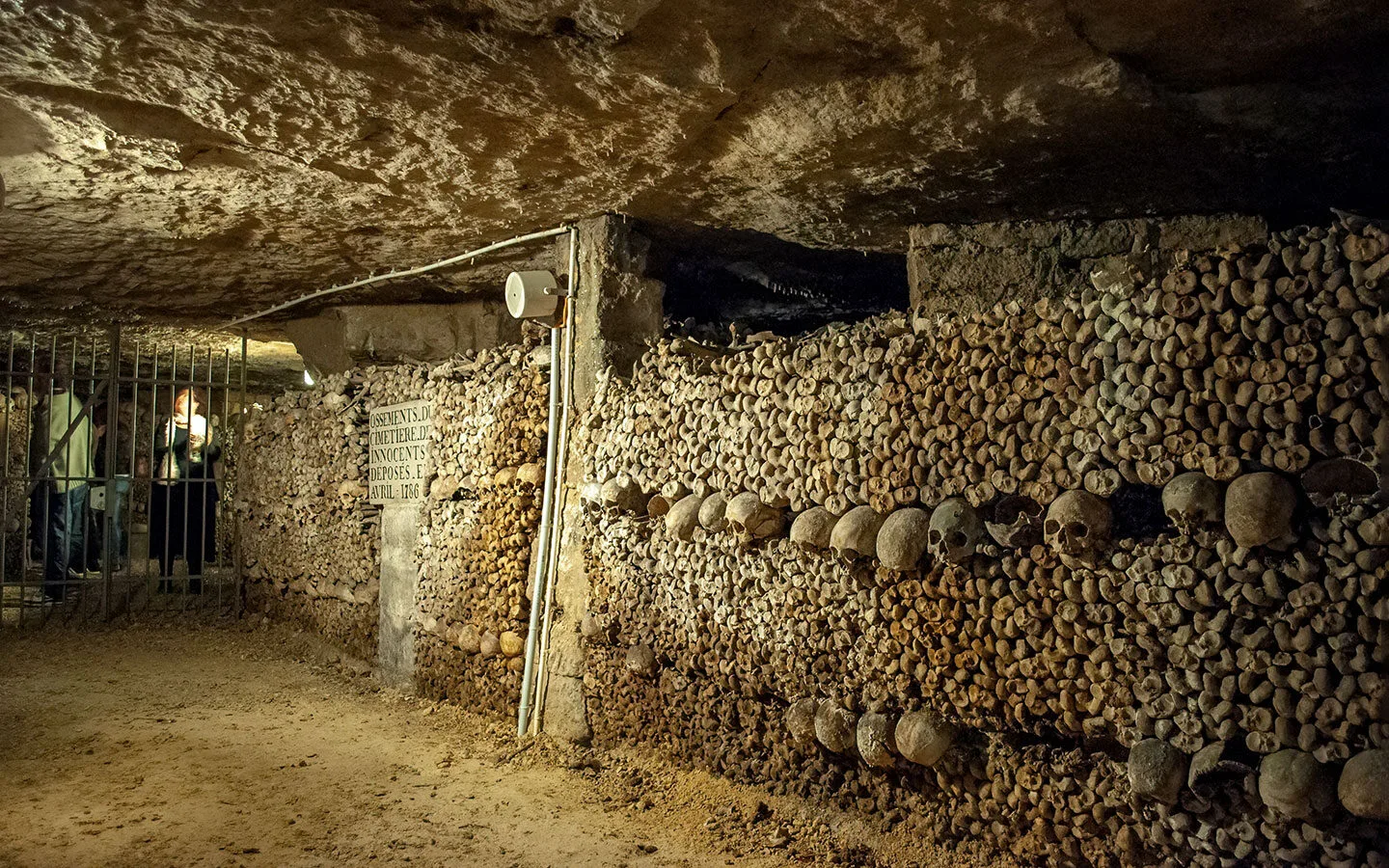
You first follow the long straight mine tunnels, having to crouch down in some places as the ceilings are so low. The tunnels are cool all year at around 14ºC/57ºF and damp with water dripping through the rock, so you might need an extra layer. Tunnels can be narrow, but visitor numbers are strictly limited to 200 at a time so it doesn’t feel crowded.
You can see engravings on the walls made when each section was repaired in the 1770s, marking the tunnels with the names of the roads they ran beneath. After about a kilometre you reach a gate with the words: Arrête, c’est ici l’empire de la Mort (“Stop, this is the empire of death”). This is the entrance to the ossuary (a store of human bones).
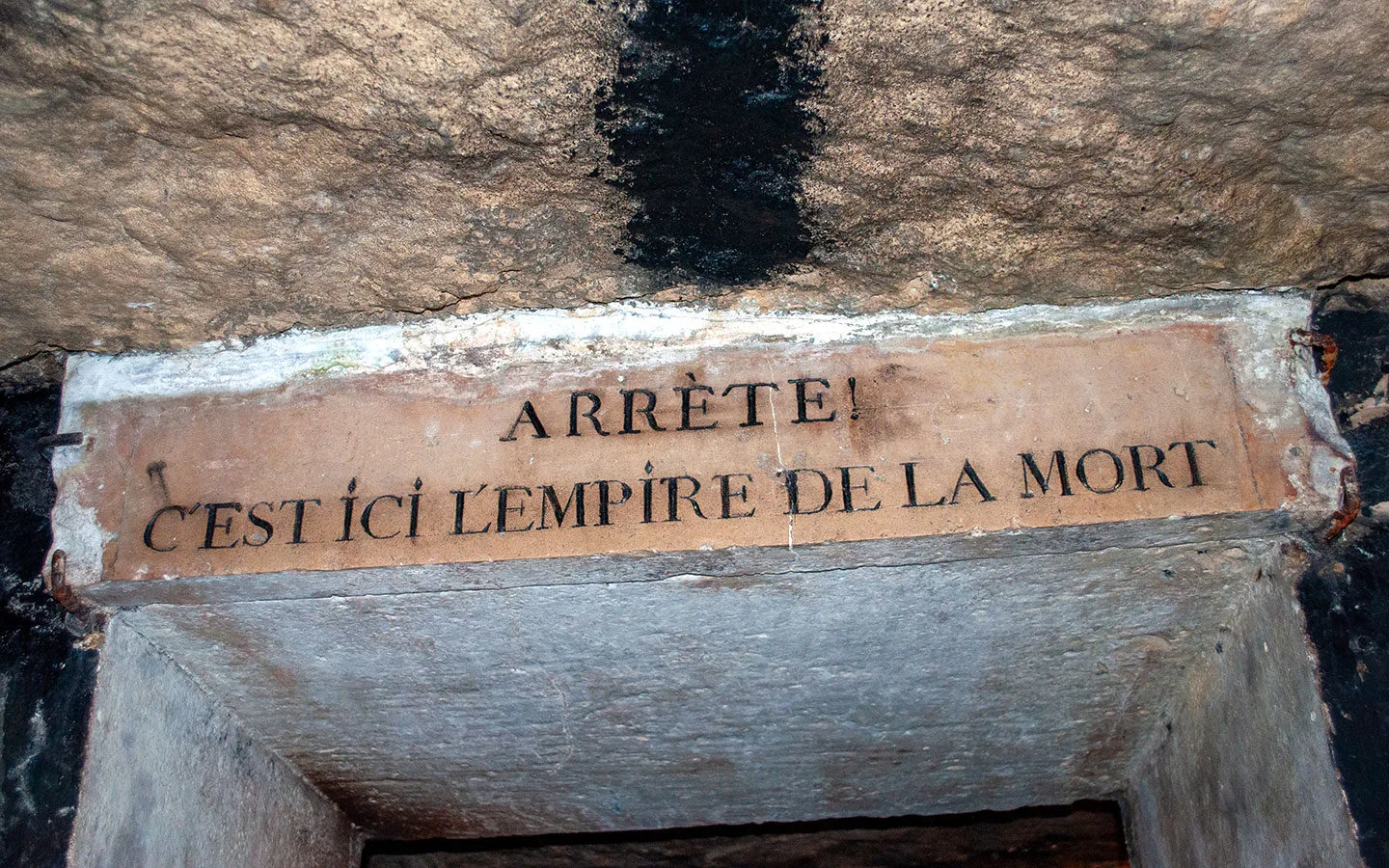
The tunnels of the ossuary are a labyrinth of passageways and galleries, stacked high with bones. Smaller bones are piled up against the walls, with longer bones and skulls stacked at the front. Some are arranged into shapes – like a heart of skulls or pillars of bones – and there are urns and crosses taken from the original cemeteries set up among them.
It’s dimly lit and the darkness and noise of the water dripping through gives it an eerie feel. The sheer number of skeletons is a sobering sight, though what is open to the public is only a tiny fraction of the full extent of the tunnels. It’s an interesting reminder of the fragility of life, as well as an insight into a strange part of Parisian history.
Once you reach the end of the catacombs, you emerge back up out into the light of a quiet backstreet, feeling like you’re back from another world (and of course there’s a gift shop where you can get all the skeleton-related gifts you never knew you needed).

The details
Where are the Paris catacombs?
The Catacombes de Paris are in southern Paris at 1 Avenue du Colonel Henri Rol-Tanguy. The nearest station is Denfert-Rochereau on Métro Lines 4 and 6, and RER B.
There’s not a lot of space inside the catacombs, so suitcases and large backpacks aren’t permitted. The maximum size for bags is 40cm x 30cm x 20cm. There’s no luggage storage either, but you could leave your bags at the Gare du Montparnasse train station – it’s around a 15-minute walk away and has self-service left luggage lockers.
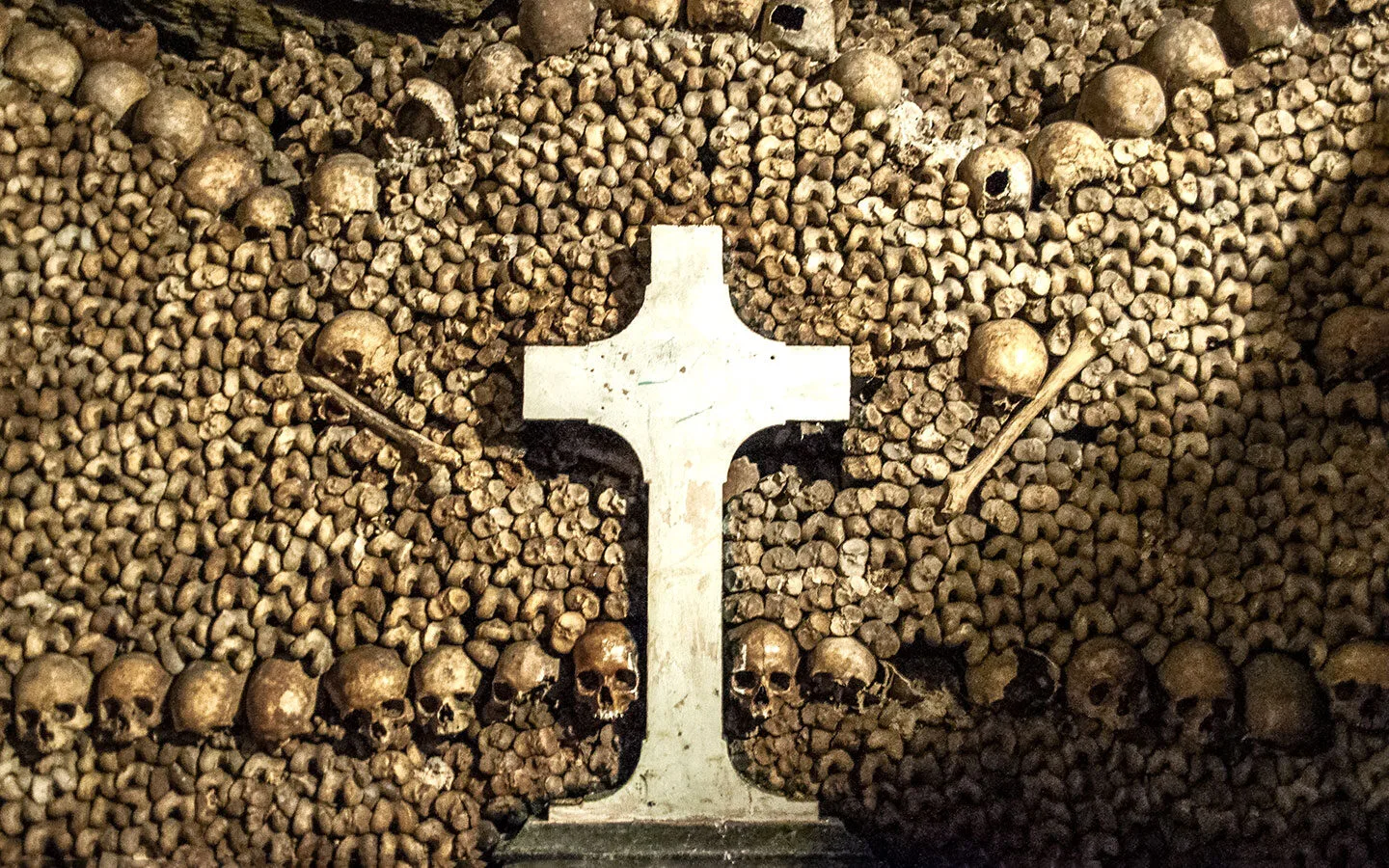
How much do they cost to visit?
Entry to the catacombs costs €29 for adults/€23 for 18–26 year olds and students/€10 for children aged 5–17. An audio guide is included (other than with the children’s ticket where it costs an extra €5), which is available in French, English, German and Spanish.
When are the Paris catacombs open?
The catacombs are open Tuesday to Sunday 9.45am–8.30pm, with last admission at 7.30pm. They’re closed on 1 January, 1 May and 25 December each year.
Visitor numbers are limited to 200 at a time, so you might have to queue up outside until there’s space when it’s busy. You can avoid the queues by pre-booking a timed ticket online – though you’re only able to book up to seven days in advance. Or you can take a private skip-the-line tour,* which also gives you special access to restricted areas.
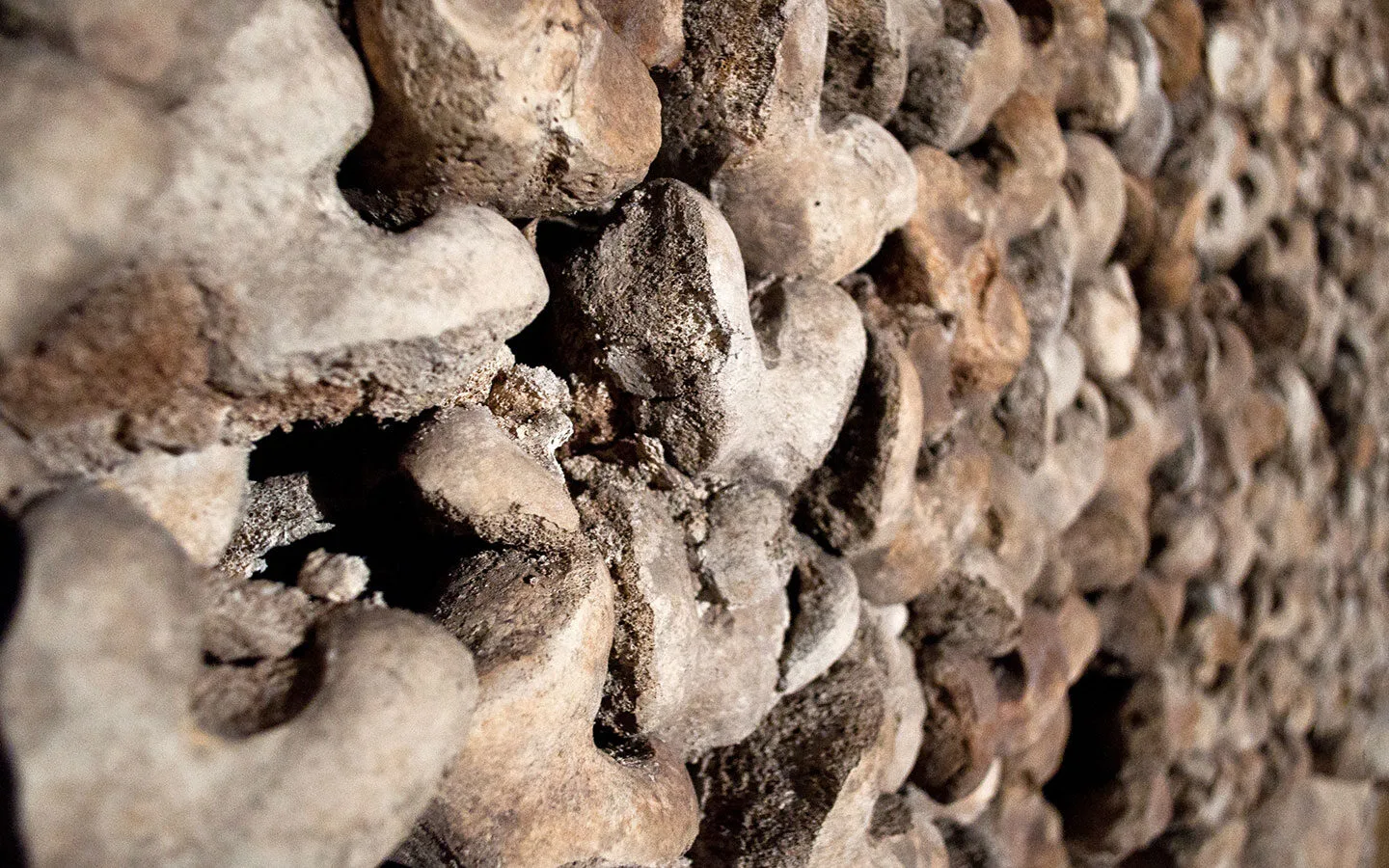
What else is there to do nearby?
The catacombs are only five minutes’ walk from another of Paris’ spooky sights – Montparnasse Cemetery. It opened in 1824 and is the final resting place of famous names like Jean-Paul Sartre, Serge Gainsbourg, Samuel Beckett and Charles Baudelaire.
You’re also right next to the Musée de la Libération de Paris, which is free to visit and tells the story of the liberation of Paris from occupation in the Second World War. Also nearby are the Giacometti Institute sculpture museum and the Cartier Foundation modern art museum. And it’s only a 20 minute walk to the Luxembourg Gardens.

Save for later

